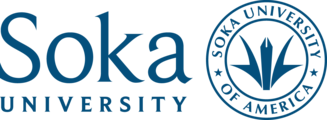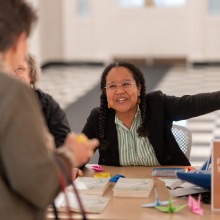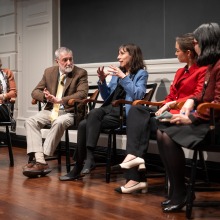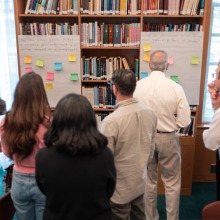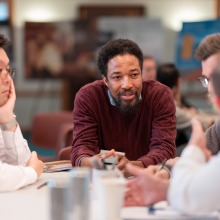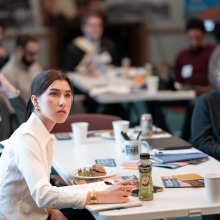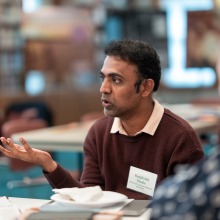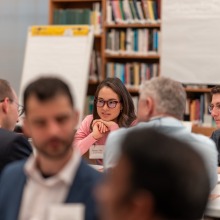Teachers Reimagine Nuclear Disarmament Education to Inspire Student Activism
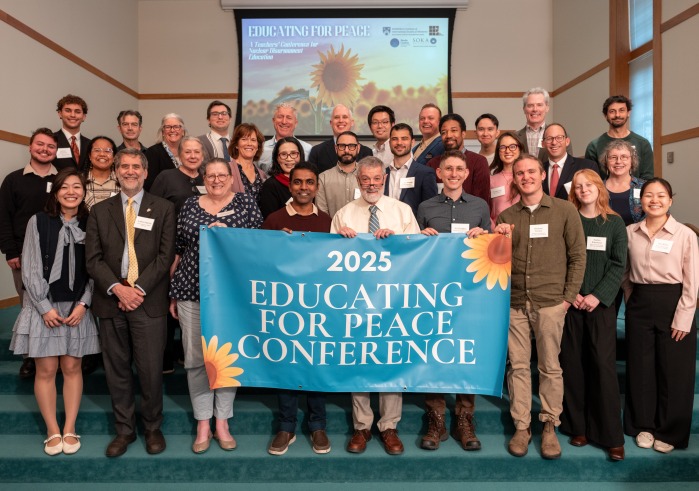
Educators from across the country gathered in Boston this spring to tackle a complex challenge: how to teach students about nuclear weapons in ways that inspire civic engagement rather than despair. The three-day Educating for Peace: A Teachers’ Conference for Nuclear Disarmament Education, organized by the Soka Institute for Global Solutions and partner organizations, provided middle and high school teachers with practical methods for transforming nuclear weapons education from a frightening history lesson into a call for peace activism.
The May 9-11 conference brought together four organizations — the Soka Institute for Global Solutions, EdEthics at the Harvard Graduate School of Education, the Ikeda Center for Peace, Learning, and Dialogue, and the James Martin Center for Nonproliferation Studies at the Middlebury Institute of International Studies at Monterey — around a shared goal: helping students see themselves as agents of change rather than helpless inheritors of nuclear danger. The event marked the start of an innovative collaboration among teachers, curriculum designers, nuclear abolition advocates, and nonproliferation scholars who see education as a pathway to a world free of nuclear weapons.
The keynote panel, held on May 9 at Askwith Hall at the Harvard Graduate School of Education, featured a diverse array of experts who explored the critical role of education in fostering peace. Moderated by Harvard faculty member Meira Levinson, the panel included Ivana Nikolić Hughes, president of the Nuclear Age Peace Foundation; Dr. Ira Helfand, a member of the International Steering Group of the International Campaign to Abolish Nuclear Weapons; Emma Pike, a program manager at Lex International Fund; and Masako Toki, senior project manager and research associate at the James Martin Center for Nonproliferation Studies.
Over the following two days, conference attendees participated in a variety of sessions and workshops at the Ikeda Center. They listened to hibakusha (atomic bomb survivor) stories, learned about the growing danger of nuclear war, and brainstormed how to integrate nuclear disarmament into existing curricula. They also heard perspectives from high school and college student leaders of Students for Nuclear Disarmament, a non-partisan organization that educates students about the existential threat nuclear weapons pose to humanity. In the final workshop, attendees created teaching resources and came up with strategies for expanding the network of nuclear disarmament educators.
In an interview in April, Dr. Andrea Bartoli, executive adviser to the Soka Institute for Global Solutions, said the institute’s nuclear abolition project is “conflict resolution at the highest level.” Nuclear abolition, he explained, is not only about destroying the weapons themselves, but about “the liberation of entire societies and humanity as a whole from the idea that everything is fundamentally organized by and oriented toward enmity and destruction.” By striving to shift perspectives on nuclear weapons in middle and high school students, the Educating for Peace conference represents a vital step toward this major societal change.
The following photo gallery documents some of the sessions, workshops, and other meaningful moments that took place over the three days of the conference.
